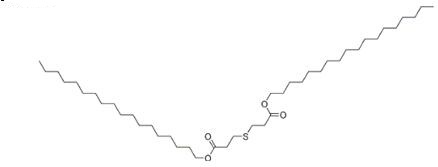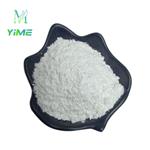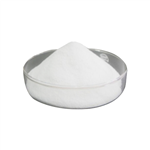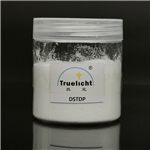Applications of Distearyl thiodipropionate as an Antioxidant
Nov 21,2019
Distearyl thiodipropionate(Antioxidant DSTDP(802);Thiodipropioic Acid Distearyl Ester; HRao-DSTDP; Distearylhiodipropiote; 3,3’-thiobis-propanoicacidioctadecylester; 3,3’-thiodi- propionicacidioctadecylester; advastab802; advastabps802; C42H82O4S)[1] is potent antioxidant, usually as additives for oxidation resistance applied in rubber, soap, lubricating oil, grease, polyolefin, etc.

Distearyl thiodipropionate as antioxidant can decompose peroxy acids and hydroperoxides into relatively harmless compounds such as carboxylic acids and alcohols[2]. Thus, distearyl thiodipropionate are allowed in foods as food additives for prolonging the shelf-life of food stuffs by protecting them against deterioration caused by oxidation[3]. For example, distearyl thiodipropionate have been common used in edible oil as an effective antioxidant for decomposing lipid hydroperoxides. In addition, in conjunction with primary radical scavengers, distearyl thiodipropionate provide superior performance in food protection. The International Numbering System for Food Additives (INS) of distearyl thiodipropionate is 390[4]. However, their use is rather limited in practice as the potential formation of sulfur-derived aromas, which would be unacceptable in certain food applications[2].
Distearyl thiodipropionate can also used in cosmetics. The experiment results of single-dose acute oral and parenteral studies and subchronic and chronic repeated dose oral studies all suggest that have not significant toxicity[5]. Meanwhile, it was neither a teratogen nor a reproductive toxicant, also was not sensitizers of irritation for animal skin or eyes. Thus, distearyl thiodipropionate and thiodipropionate derived esters were safe for applying in cosmetic products.
It can be found that distearyl thiodipropionate were widely applied for stabilizing oligomers and polymer chemical products, such as rubber, polyolefin geomembranes and plastic film, as well as applied for protecting oil, such as lubricating oil and grease[6]. Moreover, in order to possess effective stabilizers, distearyl thiodipropionate was used with phenols antioxidants for a synergistic effect in preparing polymers process [7].
In conclusion, distearyl thiodipropionate is an effective antioxidant that can be used as food and cosmetics additive, but it was more commonly used as stabilizer in polymer chemical products.
References
[1] https://www.chemicalbook.com/ProductChemicalPropertiesCB1189063.htm.
[2] Berdahl, D. R., Nahas, R. I., Barren, J. P. (2010). Synthetic and natural antioxidant additives in food stabilization: current applications and future research. In Oxidation in foods and beverages and antioxidant applications (pp. 272-320). Woodhead Publishing.
[3] Zhenglin, L. Y. Y. K. J., Jinlu, W. (1993). Studies on Antioxidative Effect of Dilauryl Thiodipropionate on Edible Oil and Fat. Food and Fermentation Industries, 3.
[4] Miková, K. (2001). The regulation of antioxidants in food. Antioxidant in Foods: Practical Applications, 267-284.
- Related articles
- Related Qustion
- Distearyl Thiodipropionate: Synthetic Method and Significance in Antioxidant Synthesis and Automobile Coatings Mar 25, 2024
Distearyl thiodipropionate is synthesized through a method involving mixing, rectification, transesterification, and fractionation. It is important in antioxidant synthesis and automobile coatings.
- Distearyl thiodipropionate: properties, applications and safety Sep 20, 2023
Distearyl thiodipropionate is a versatile antioxidant and UV stabilizer used in cosmetics. It protects against free radicals and UV damage and preserves moisture.
Cyanamide as chemical substance with unique and chemically promiscuous nitrogen-carbon-nitrogen connectivity, have been commonly used as industrial raw materials.....
Nov 21,2019Organic reagentsMorpholinylsulfur trifluoride is an important intermediate of organic synthesis for preparing organic fluorine compounds.....
Nov 21,2019Organic Synthesis IntermediateDistearyl thiodipropionate
693-36-7You may like
Distearyl thiodipropionate manufacturers
- Distearyl thiodipropionate
-

- $10.00 / 1kg
- 2024-04-19
- CAS:693-36-7
- Min. Order: 1kg
- Purity: 99.9
- Supply Ability: 20 tons
- Distearyl thiodipropionate
-

- $0.00 / 25Kg/Drum
- 2024-04-19
- CAS:693-36-7
- Min. Order: 1KG
- Purity: 99%
- Supply Ability: 500mt
- ANTIOXIDANT TRUELICHT DSTDP
-

- $0.00 / 1KG
- 2024-04-16
- CAS:693-36-7
- Min. Order: 1drums
- Purity: 98.0%
- Supply Ability: 1000tons




